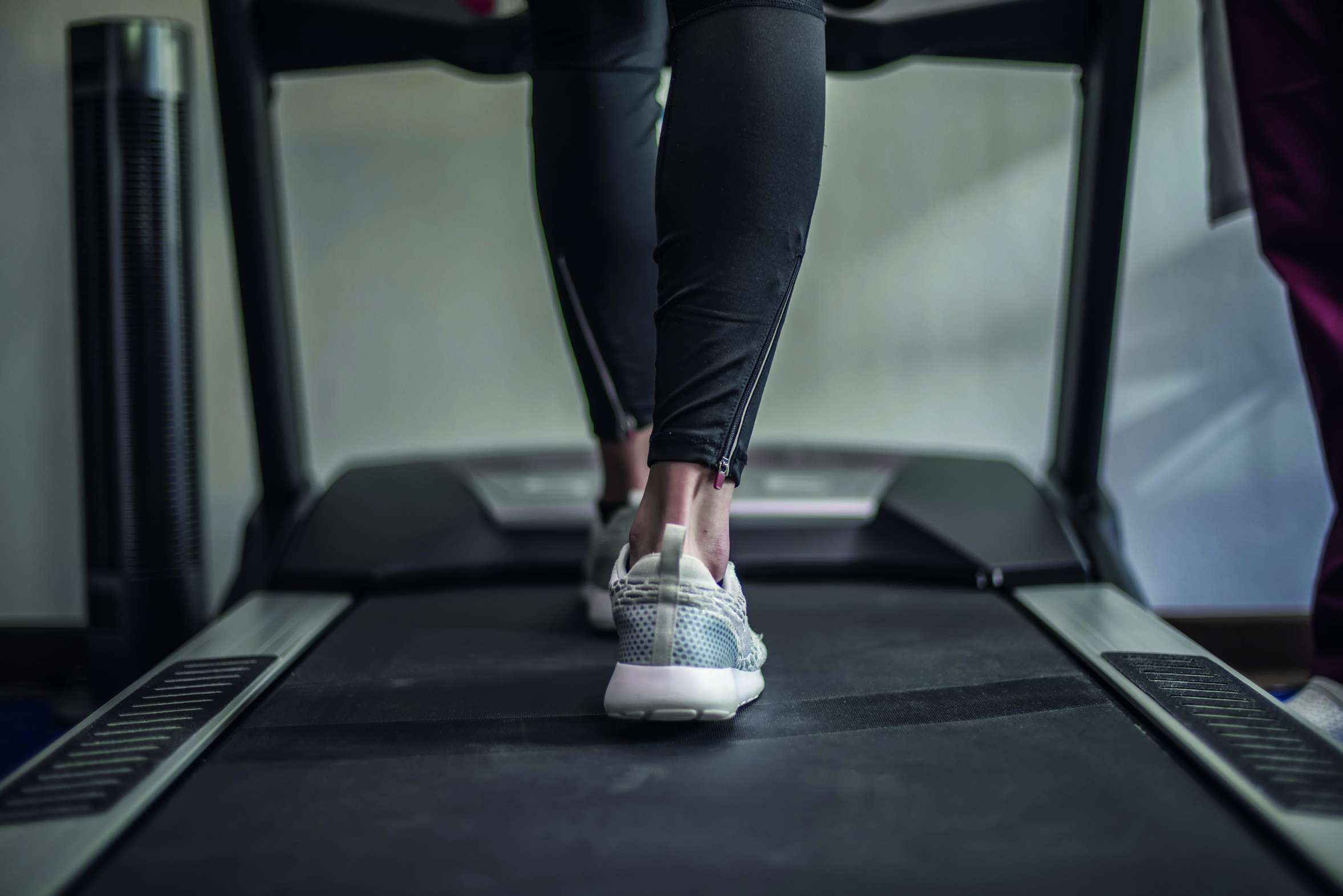
THERAPY-Magazin
The effectiveness of treadmill exercise in rehabilitation
Treadmill training improves walking speed and endurance in stroke patients who can already walk. Learn how early intervention—within three months post-stroke—offers the best outcomes and what future studies aim to explore.

Redaktion
THERAPY Magazin
Around 60 percent of all stroke patients have difficulty walking, and improving walking ability is known to be one of the main goals of rehabilitation. Treadmills are used with and without weight support in therapy. But which patients benefit from this type of intervention?
The update to the review by Jan Mehrholz and colleagues published in August 2017 makes a significant contribution to clarifying this question. The researchers investigated whether and to what extent treadmill training can improve walking compared to other training methods. They reviewed 56 studies involving a total of 3,105 patients.
The scientists found moderate evidence that stroke patients who can already walk independently at the start of therapy benefit from the treatment. In particular, sustained improvements in walking speed and endurance were demonstrated. Conversely, patients who are not able to walk hardly benefit at all from treadmill training.
The scientists found moderate evidence that stroke patients who can already walk independently at the start of therapy benefit from the treatment. In particular, sustained improvements in walking speed and endurance were demonstrated. Conversely, patients who are not able to walk hardly benefit at all from treadmill training.
Significant improvements can be achieved in the first three months after a stroke.
Treadmill training should be used primarily with mobile stroke patients to improve endurance and gait speed
An evaluation of the subgroups shows that statistically and clinically significant improvements can be achieved, especially within the first three months after a stroke. The effects on patients treated in the chronic phase (i.e. more than six months after the stroke) are usually more minor.
In practice, treadmill training should therefore be used especially with stroke patients who can walk on their own to specifically improve their walking speed and endurance as early as possible.
Future studies should particularly examine the effects of treadmill training with different frequencies, duration or intensity (in terms of speed increments and the gradient), and the use of handrails.
In practice, treadmill training should therefore be used especially with stroke patients who can walk on their own to specifically improve their walking speed and endurance as early as possible.
Future studies should particularly examine the effects of treadmill training with different frequencies, duration or intensity (in terms of speed increments and the gradient), and the use of handrails.
Key definition: Treadmill training with and without bodyweight support (BWSTT) is an intervention that is usually performed as part of physiotherapy in different settings. In neurological rehabilitation, treadmills are used for task-specific training to improve walking ability, and especially gait speed and endurance.
The patient is secured during training with a harness system, which can also support part of their body weight. As a rule, the patient is able to actively repeat the gait cycle. Occasionally, the patient is guided by the therapist, although it should be noted that, according to the latest scientific findings, patients who are unable to walk benefit more from training on an electromechanical gait trainer. With these devices, the legs are moved along a natural step curve on motorised footplates, which also removes a physical burden from the treating therapist
The patient is secured during training with a harness system, which can also support part of their body weight. As a rule, the patient is able to actively repeat the gait cycle. Occasionally, the patient is guided by the therapist, although it should be noted that, according to the latest scientific findings, patients who are unable to walk benefit more from training on an electromechanical gait trainer. With these devices, the legs are moved along a natural step curve on motorised footplates, which also removes a physical burden from the treating therapist
Ambulante Rehabilitation
Fachkreise
Science
Stationäre Rehabilitation
THERAPY 2018-I
THERAPY Magazine

Redaktion
THERAPY Magazin
References:
- Mehrholz J, Thomas S, Elsner B. Treadmill training and body weight support for walking after stroke. Cochrane Database of Systematic Reviews 2017, Issue 8. Art. No.: CD002840. DOI: 10.1002/14651858.CD002840.pub4
Related contents
Find related exciting contents in our media library.
This is not what you are searching for? Knowledge
Meet our specialists.
Are you interested in our solutions? Schedule a meeting with a Consultant to talk through your strategy and understand how TEHRA-Trainer can help you to advance rehabilitation.